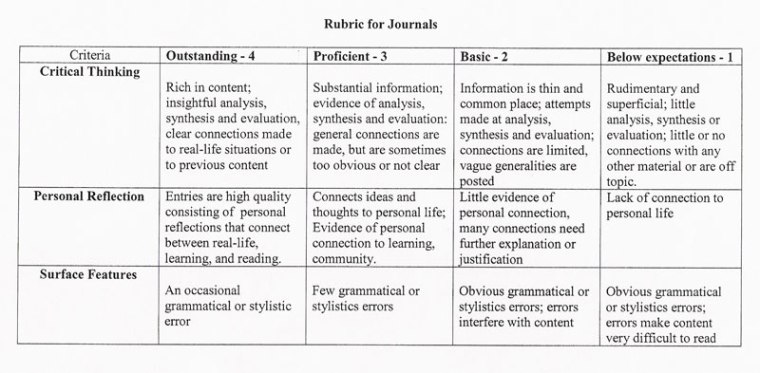
When grading or teaching, have you ever wished that there was a magical way to make grading easier, eliminate “obvious” student questions about an assignment, and help students produce the highest quality work? No need to use a magic wand: simply use a rubric!
A rubric is a chart that teachers use when assessing student learning to communicate to their students what their level of mastery is for a set of skills, learning products, or processes. It is a systematic way of giving students feedback, but beyond that, it has many additional benefits.
You might ask, why use a rubric? Doesn’t it take too much time to create them for assignments? Isn’t it just one more thing to mark up? Quite the contrary!
Here are some great reasons to use rubrics:
Rubrics Help Teachers Strengthen Their Planning Process
Writing a rubric helps instructors think about what parts of the assignment are most crucial to learning. Sometimes when you create a rubric, you see that you need to retool the assignment to prioritize certain skills or to build in additional learning opportunities. You might see that you are hitting the same skills over and over, and that you might need to branch out in your curricular design.
But rubrics are also helpful to teachers in others ways.
Rubrics Make Grading Easier
When grading, have you ever found yourself writing the same comment on student papers over and over again? If you have a rubric created, it’s much easier to have that comment there as one of the skills and to circle or highlight it. Think of how much time you’ll save!
The benefits to extend to students too.
Rubrics Give Students Clarity On the Assignment, Allowing them to Produce High Quality Work
Similarly, have you ever found yourself answering the countless questions from students about what they need to do to succeed on an assignment? It’s frustrating for teachers and students alike! Creating a rubric eliminates all of those pesky/repetitive questions because the parameters for success are clearly laid out for the students. Make sure that students can see exactly what they need to do to receive the highest level for each category in the rubric. After you read through your rubric with your students, they will have the recipe for success. You will notice a marked improvement in the quality of work that you receive from students if you make it clear what is expected for each part.
Rubrics Help Students Understand Your Feedback Better and Improve in the Future
The levels on a rubric are associated with a numerical score, making it easier to come up with and justify a grade on an assignment; this makes rubrics a very fair way to generate a score. Furthermore, having clear categories helps students see where they succeeded and where they need to improve. Students will see grading and feedback as interconnected, and will look beyond the grade towards improvement.
Now that you are sold on the magic of rubrics, here are the best tips for creating one.
How to create a rubric:
- Come up with four to five categories for skills that you are assessing for a project, making a row for each skill. For instance, for an oral presentation for science class, you might assess quality of research, structure of presentation, critical thinking, and speaking skills. Be sure not to generate more than five categories, or it becomes too confusing for students.
- For each category, create five boxes (1-5, with 5 being the highest). Write the 5 (high score) box first. When you think of the “perfect” embodiment of that skill, what is it that comes to mind? Fill that in the high score box. For instance, for quality of research, you might write, “student includes at least 5 facts from credible sources and all 5 facts support the presentation’s main point.” For the remaining 4 boxes, adjust the top level down accordingly. Repeat for the remaining categories/skills.
- That’s it! Not too hard, huh?
Some other helpful hints:
You can create rubrics that are not specific to one assignment, and reuse them every time you do that type of activity.
You can use rubrics that other teachers have created. One great resources for this is a website called rubistar: http://rubistar.4teachers.org/index.php Search thousands of pre-created rubrics, or use their simple tool to create and share your own!
Now you are rubric savvy- Let the magic begin!
